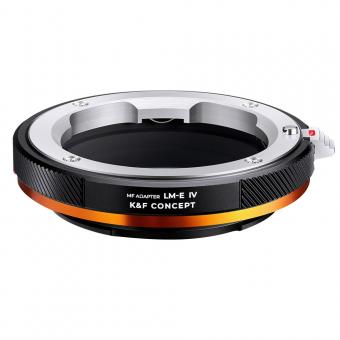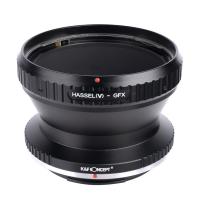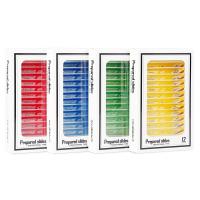How Much To Repair A Camera Lens?
When your camera lens starts malfunctioning, it can deeply affect your photography and even your professional work if you rely on it for assignments. Understanding the costs associated with repairing a camera lens can help you make informed decisions about whether to invest in repairs or consider replacing the lens altogether. In this in-depth guide, we will explore various factors that influence the cost of repairing a camera lens, and provide you with insights to make the best decision for your specific situation.

Factors Affecting the Cost of Camera Lens Repair
Repair costs for camera lenses can vary significantly, and this is influenced by several critical factors:
1. Type of Damage:
- Internal Mechanisms: If the aperture blades, focusing mechanism, or image stabilization systems are damaged, the repair could be quite complex and expensive.
- External Damage: Scratches on the lens surface or damage to the lens mount generally cost less to repair as these might only involve replacing the outer elements.
- Water Damage: This could potentially require a complete overhaul of the lens, making it one of the costliest repair types.
2. Lens Manufacturer:
- OEM Lenses: Repairing original equipment manufacturer (OEM) lenses like those from Canon, Nikon, Sony, etc., tend to cost more because the parts are proprietary and must often be sourced from the manufacturer.
- Third-Party Lenses: Brands like Tamron or Sigma could be cheaper to repair, but this is not a hard and fast rule.
3. Lens Type:
- Prime Lenses: Usually simpler and cheaper to repair.
- Zoom Lenses: More complex due to their intricate internal mechanisms, making them more expensive to fix.
4. Warranty and Service Plans:
- Under Warranty: If your lens is still under warranty, many repairs could be free or significantly discounted.
- Out of Warranty: Expect to pay more for out-of-warranty repairs. Some service plans might cover the costs partially.
5. Service Provider:
- Official Service Centers: Typically charge more but provide guaranteed repairs with genuine parts.
- Third-Party Repair Shops: Often cheaper, but quality can vary.
6. Location:
- Repair costs can significantly differ based on your geographic location due to variations in labor rates and availability of parts.
Common Types of Lens Repairs and Estimated Costs
1. Cleaning and Maintenance:
A routine cleaning or minor maintenance usually ranges from $25 to $75. This is ideal for removing dust, minor debris, or addressing minor calibration issues.
2. Scratch Repair or Replacement:
Repairing or replacing scratched lens elements ranges from $100 to $250, depending on the severity of the damage and the specific lens.
3. Aperture Mechanism Repair:
Issues with the aperture blades or mechanisms can cost between $150 and $400 to repair. For high-end lenses, expect higher costs.
4. Auto-Focus System Repairs:
The auto-focus systems can be quite complex. Repairs typically range from $200 to $450, varying by lens complexity and brand.
5. Internal Electrical Issues:
Fixing internal electrical components or image stabilization systems can range from $250 to $500. This involves significant disassembly and expertise.
Should You Repair or Replace?
While the above costs provide a general idea, deciding whether to repair or replace your lens requires a more nuanced approach. Here are some guiding questions:
- Cost of a New Lens: Compare the repair cost with the price of a new or refurbished lens. Sometimes, replacing it might be more economical.
- Lens Value: Consider the original value of the lens. High-end lenses are usually worth repairing because they still have significant value even after repair.
- Frequency of Use: If the lens is a workhorse in your kit and you use it frequently for professional work, investing in a repair makes sense as downtime can affect your livelihood.
- Turnaround Time: Repair times can vary. For urgent projects, you might need to get a replacement while the lens is being repaired.
Choosing a Repair Service
To ensure you get the best value and quality for your money, choosing the right repair service is crucial:
1. Manufacturer Service Centers:
These are generally reliable and provide repairs with genuine parts. They might also offer limited warranties on the repairs, which can give you peace of mind. However, they can be more expensive and slower.
2. Authorized Third-Party Service Centers:
These can strike a good balance between cost and reliability. Ensure they are authorized to work on your brand and have good reviews.
3. Local Camera Repair Shops:
These can offer faster turnaround times and lower costs. However, the quality can differ greatly, so seek out reviews and recommendations.
4. Mail-In Services:
Many repair services accept lenses via mail. This can be convenient but also risky if the shipping is not handled properly. Make sure to use insured and tracked shipping methods.
DIY Repair: Is It Worth It?
For those technically inclined and willing to take the risk, DIY repair might be an option but comes with its own set of risks and costs:
1. Tools and Equipment:
You will need specialized tools for lens disassembly and reassembly, which can add to the cost.
2. Replacement Parts:
Sourcing genuine parts can be difficult. Non-genuine parts may not work correctly or could void any remaining warranty.
3. Skill Level:
Camera lenses are intricate and precise. One wrong move can make the problem worse or render the lens unusable.
4. Risk Assessment:
If your lens is extremely valuable or integral to your work, DIY is not advisable due to the high stakes involved.
The cost to repair a camera lens can vary widely based on multiple factors such as the type and brand of the lens, the nature and extent of the damage, and where you choose to have it repaired. Upfront research and understanding these variables can help you make an informed decision. Whether you opt for a repair or decide to replace your lens entirely, always weigh the long-term value and reliability to make the best choice for your photography needs. Remember, a well-maintained lens is an investment that can significantly enhance the quality of your work.








































